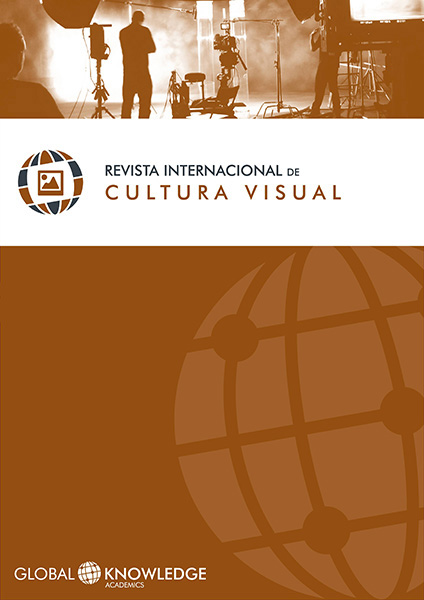Another Twist: The Abstract/Geometric Shapes as Evocation of the Venezuelan Identity
DOI:
https://doi.org/10.37467/gka-revvisual.v3.492Keywords:
Identity, Art, Abstract, Kinetic, Geometry, SensitiveAbstract
Identity and its various fragmentary meanings have resulted in a number of areas of use and emotional forms of acceptance and rejection in modern times. To speak of it in the contemporary world means to give another twist to a theme widely addressed within the artistic representations of the Venezuelan territory, as the expression of a speech metartistico built outside their fields of assemblage and which communicates interminably. The present formulation of Venezuelan art shows the ambiguity of a speech on/in the identity mobilized between the apparently foreign and simulated himself, as a sign of recognition, of their identity formulation; agents with which continually revisit the postulates of a hegemonic plastic in the 50 and 60 of the last century, through abstraction and kinetic, and how it is derivative in a sensitive, ephemeral spaces structural geometry and precarious releases in a volatile structures identity.
Downloads
References
Candau, J. (2002). Antropología de la Memoria . Buenos Aires, Argentina: Nueva Visión.
García Canclini, N. (2005). Diferentes, desiguales y desconectados. Mapas de la interculturalidad. Madrid, España: Gedisa.
Guasch, A. M. (2001). El arte último del siglo XX. Del postminimalismo a lo multicultural . Madrid, España: Alianza.
Guasch, A. M. (2009). El arte del siglo XX en sus exposiciones. 1945-2007 . Madrid, España: Serbal.
Grimson, A. (2011). Los límites de la cultura. Crítica de las teorías de la identidad . Buenos Aires, Argentina: Siglo XX.
Guilbaut, S. (2009). Los espejismos de la imagen en los lindes del siglo XXI . Madrid, España: Akal/Arte Contemporáneo.
Jiménez, A. (2001). Ni aquí ni allá. En: Heterotopías. Medio Siglo sin Lugar: 1918-1968 . Madrid, España: Museo Nacional Centro de Arte Reina Sofía.
Llorens, T. (2001). Torres García y el mito del arte como utopía de salvación. En: Heterotopías. Medio Siglo sin Lugar: 1918-1968 . Madrid, España: Museo Nacional Centro de Arte Reina Sofía.
Otero, R. A. y Otero, S. A. (1999). Polémica sobre Arte Abstracto . Caracas, Venezuela.
Papastergiadis, N. (2005). Sur-sur-sur: una introducción. En: Alicia Zamora (Ed.), Enfoques a distancia sobre la producción de cultura en la situación contemporánea . San José, Costa Rica: Teor/ética.
Pérez Oramas, L. (1988). Armando Reverón o la crítica del impresionismo puro. En: Graciela Pantin y Roselia Level (Eds.), La cocina de Jurassic Park y otros ensayos visuales . Caracas, Venezuela: Fundación Polar.
Pérez Oramas, L. (1988). Armando Reverón y el arte moderno. En: Graciela Pantin y Roselia Level (Eds.), La cocina de Jurassic Park y otros ensayos visuales . Caracas, Venezuela: Fundación Polar.
Pérez Oramas, L. (1988). La isla enunciativa: isla reveriana. En: Graciela Pantin y Roselia Level (Eds.), La cocina de Jurassic Park y otros ensayos visuales . Caracas, Venezuela: Fundación Polar.
Salcedo, M. A. (2000). Armando Reverón y su época . Mérida, Venezuela: Dirección de Cultura y Extensión, Universidad de Los Andes.
Traba, M. (2005). Dos décadas vulnerables en las artes plásticas latinoamericanas, 1950-1970. Buenos Aires, Argentina: Siglo XXI.
Traba, M. (2005). Venezuela: cómo se forma una plástica hegemónica. En: Ana Pizarro (Ed.), Marta Traba. Mirar en América . Venezuela: Biblioteca Ayacucho
Downloads
Published
How to Cite
Issue
Section
License
Those authors who publish in this journal accept the following terms:
- Authors will keep the moral right of the work and they will transfer the commercial rights.









